Key takeaways:
- Understanding and adapting to different lighting situations can transform challenging conditions into compelling images.
- Utilizing tools like reflectors, tripods, and diffusers can significantly improve photo quality in difficult lighting.
- Adjusting camera settings such as exposure compensation and ISO can effectively handle bright or low-light scenarios.
- Flexibility and creativity in approach can lead to unexpected and stunning photographic outcomes.
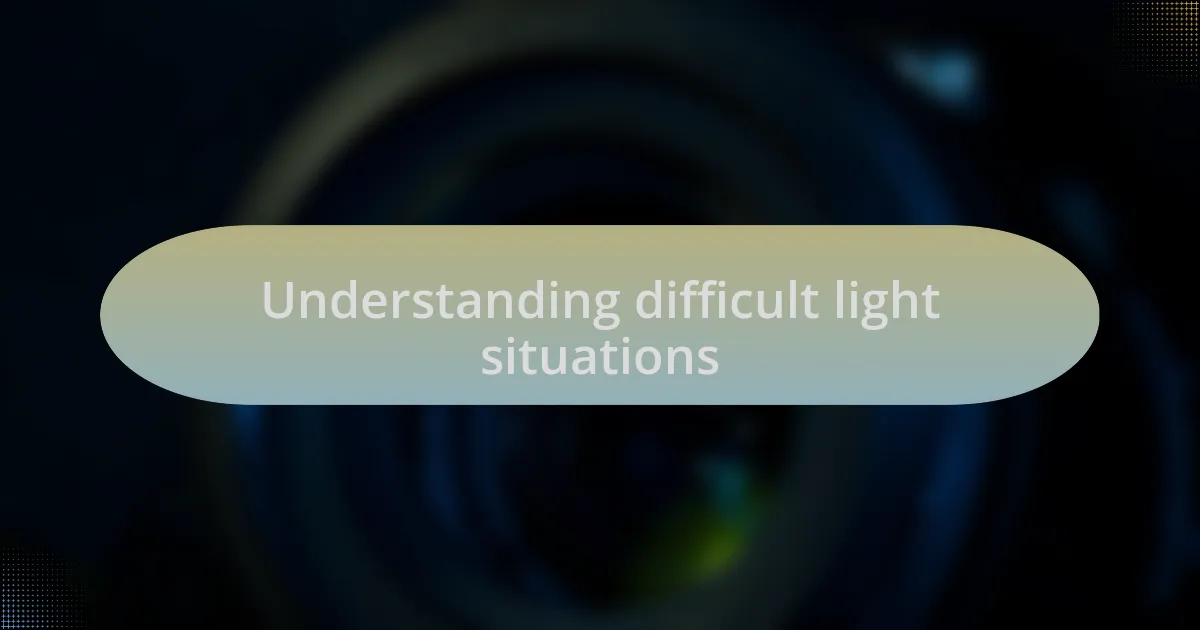
Understanding difficult light situations
Difficult light situations can often feel like an uphill battle for a photographer. I remember a day spent at the beach, where the harsh midday sun cast unflattering shadows on my subjects. It made me question, how do you find beauty in such challenging conditions? Understanding light characteristics—like how it changes throughout the day—really helps in crafting images that resonate.
We’ve all faced that moment when we’re outside, and the sun suddenly ducks behind a cloud, altering the scene dramatically. I’ve often found myself scrambling to adjust my camera settings, but what if I told you that embracing those unexpected shifts can lead to stunning, atmospheric shots? When I allowed myself to play with the darkness and moody lighting, it transformed my perspective and my photographs.
Then there’s the issue of mixed lighting, which can really challenge our ability to capture a cohesive image. I once shot a wedding indoors with both natural light pouring in and overhead fluorescent lights buzzing above. Balancing those different light sources required quick thinking and creativity. Have you ever considered the unique story that those contrasting lights can tell? Understanding the nuances of each light situation not only sharpens your technical skills but deepens your emotional connection to the moment.
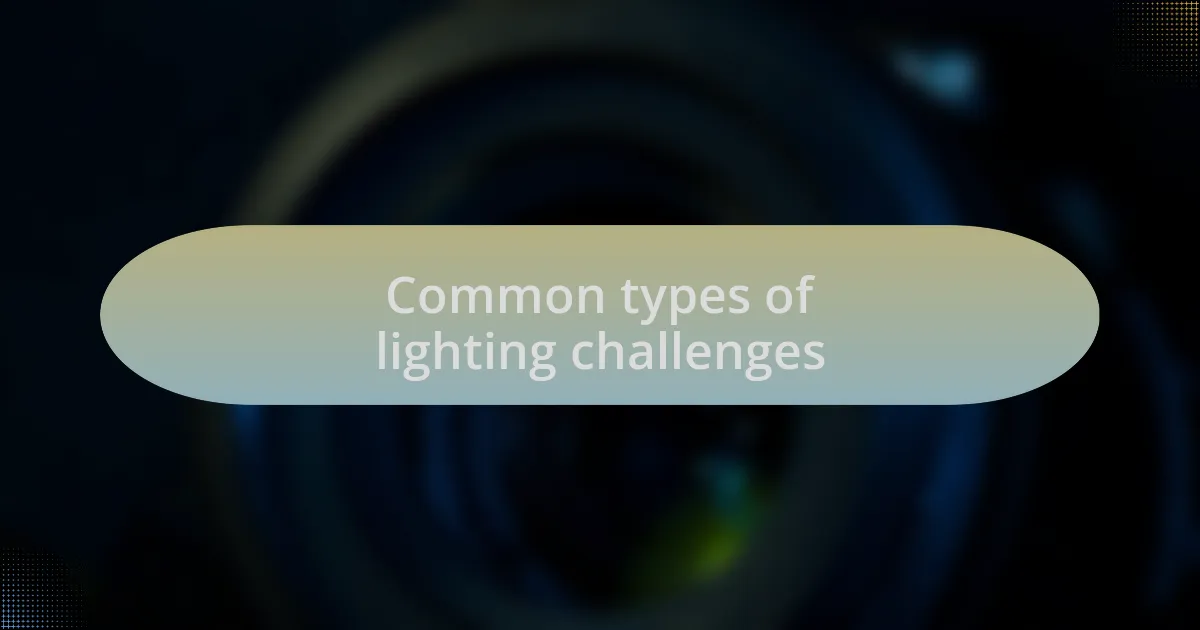
Common types of lighting challenges
Every photographer has likely grappled with the harshness of direct sunlight, which can create stark contrasts and unflattering highlights. I once found myself in a vibrant city market during midday, where the bright sun bleached the colors out of my images. It was a lesson learned in finding shade and using reflecting surfaces to bounce light back onto my subjects. Have you ever thought about how shadows can actually enhance the depth of your shots?
Another common lighting challenge is low-light situations, where a lack of adequate light can make it difficult to capture sharp images. I remember a nighttime street event where the neon lights flickered against the dark streets. The challenge was exhilarating, pushing me to increase my ISO settings and experiment with slower shutter speeds. Each click captured not just a moment but the vibrant pulse of the night. How do you approach snaps when the sun dips below the horizon?
Lastly, the unpredictability of backlighting can turn a potentially stunning shot into a silhouette quick enough to leave you in a creative panic. I faced this when photographing a friend against a breathtaking sunset. Initially, their face was a shadow against the vibrant colors, but adjusting my position and adding a fill light revealed their features. It made me realize how backlighting, when managed well, can evoke emotions that draw viewers in. Isn’t it fascinating how a simple shift in perspective can unlock the full potential of a scene?
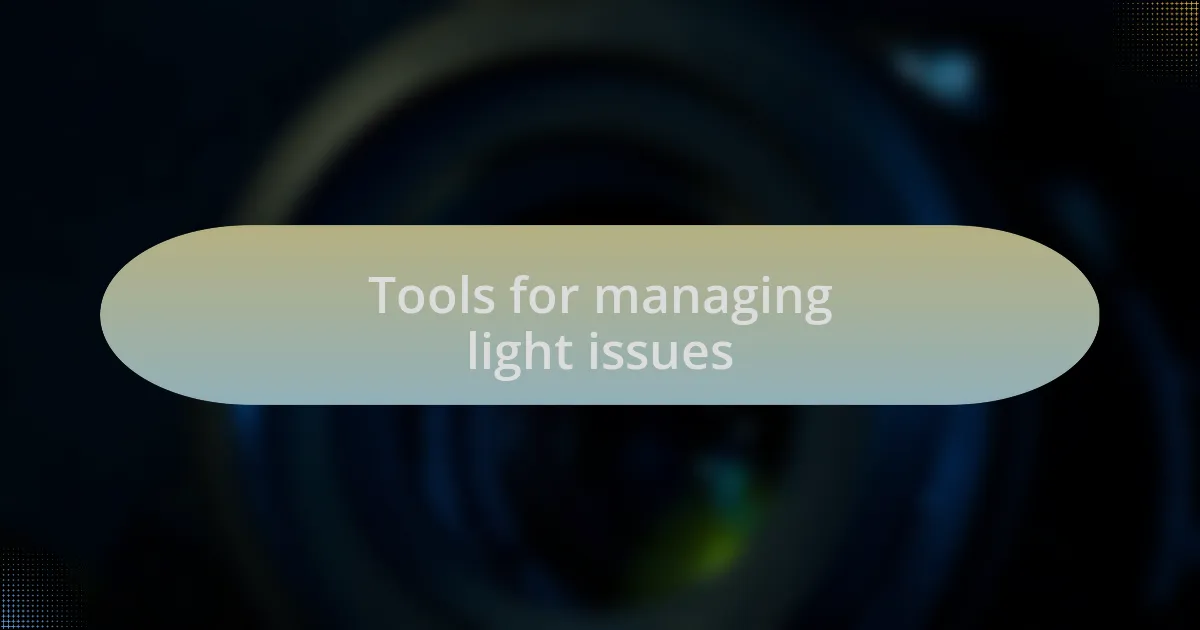
Tools for managing light issues
When it comes to managing light issues, I can’t recommend a good reflector enough. I remember being at an outdoor portrait session on a cloudy day, feeling frustrated as the soft, diffused light didn’t do justice to my subject’s features. I quickly grabbed my reflector and angled it towards their face, bouncing the subtle light back. The difference was like night and day—have you ever experienced such a turnaround in your photos by simply altering the light?
For low-light scenarios, I often rely on my trusty tripod. During a candid shoot of street musicians in a dimly lit cafe, the slight shake of my hands resulted in blurry photos that didn’t capture the energy of the moment. It was then that I realized the tripod wasn’t just a support; it became my ticket to longer exposures. How often do you remember to bring one along, especially when the scene feels right but the light isn’t cooperating?
Lastly, using diffusers can be a game changer with harsh sunlight. I once attended a picnic where the sun was relentless, creating unflattering shadows on my friends’ faces. I remembered packing a simple cloth diffuser, and when I held it above them, the harsh light softened beautifully. This experience taught me to carry tools that can adapt to the unpredictable nature of sunlight—what essential gear do you have that helps you illuminate your subjects in a pinch?

Techniques for overcoming lighting problems
When faced with strong backlighting, I often turn to the power of fill flash. During a recent sunset shoot, my subject stood in front of a stunning, glowing horizon, but their face was swallowed in shadow. I activated my flash to provide just enough light, ensuring their features were illuminated while still retaining the breathtaking backdrop. Have you ever struggled to balance exposure when the light is playing tricks on you?
In instances where bright light overwhelms your scene, I find that adjusting the exposure compensation can make a significant difference. I took a series of landscape shots on a sunny afternoon, only to realize my images were consistently overexposed. By dialing down the exposure compensation, I was able to capture the vibrant colors of the foliage without losing detail. Isn’t it remarkable how a slight tweak can save a potentially unusable shot?
Finally, while shooting indoors or in shaded areas, boosting the ISO can be a lifesaver. I remember photographing a friend’s art exhibit where the light was dim, and I was worried about capturing the vibrant details of the artwork. Increasing the ISO allowed me to achieve the clarity I needed, albeit with a little grain. Isn’t it great to see how a few adjustments can transform your images, even when the lighting isn’t ideal?
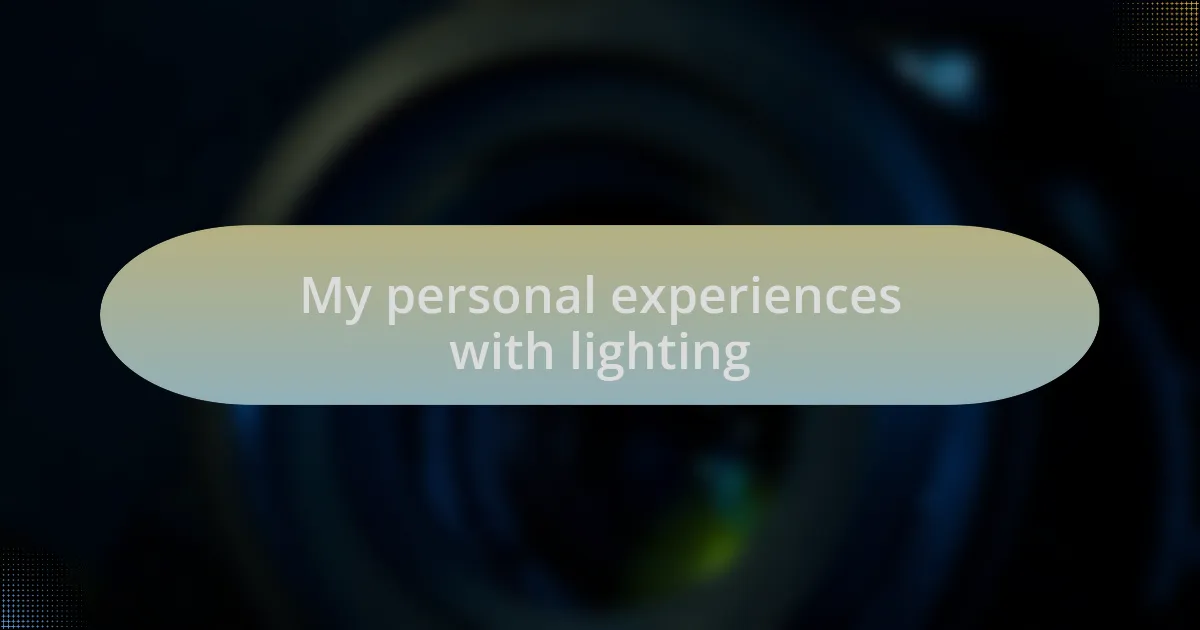
My personal experiences with lighting
I vividly recall a morning when I was shooting outdoors, and heavy fog rolled in unexpectedly. The diffused light created a mysterious atmosphere, but it also left my images flat and lacking contrast. I decided to embrace the situation by using my camera’s settings creatively, underexposing my shots slightly. To my surprise, the results were ethereal, with soft tones that truly captured the essence of that foggy morning. Have you ever had a moment where the conditions turned out better than you anticipated?
On another occasion, I faced the challenge of mixed lighting while photographing a friend’s wedding. The venue had large, bright windows flooded with sunlight, while the chandeliers cast a softer glow. To balance the two sources, I opted for a warmer white balance, allowing the images to convey the warmth of the setting while still being true to the brightness of the natural light. It felt rewarding to see how one adjustment could harmonize contrasting light sources. Do you think the right white balance can truly change the mood of a photograph?
My experience shooting at dusk has taught me the beauty of transitioning light. As the sun dipped below the horizon, I often found myself racing against time. One evening, I captured a sunset where the vivid oranges and deep purples were breathtaking. Yet, when I turned to photograph my subject against that backdrop, I noticed they were just a silhouette. I quickly set my camera to a longer exposure and tuned my settings to preserve those vibrant colors while revealing my subject’s features. It was exhilarating to see how adapting on the fly could produce striking results—have you ever felt that rush when you nail the perfect shot just in time?
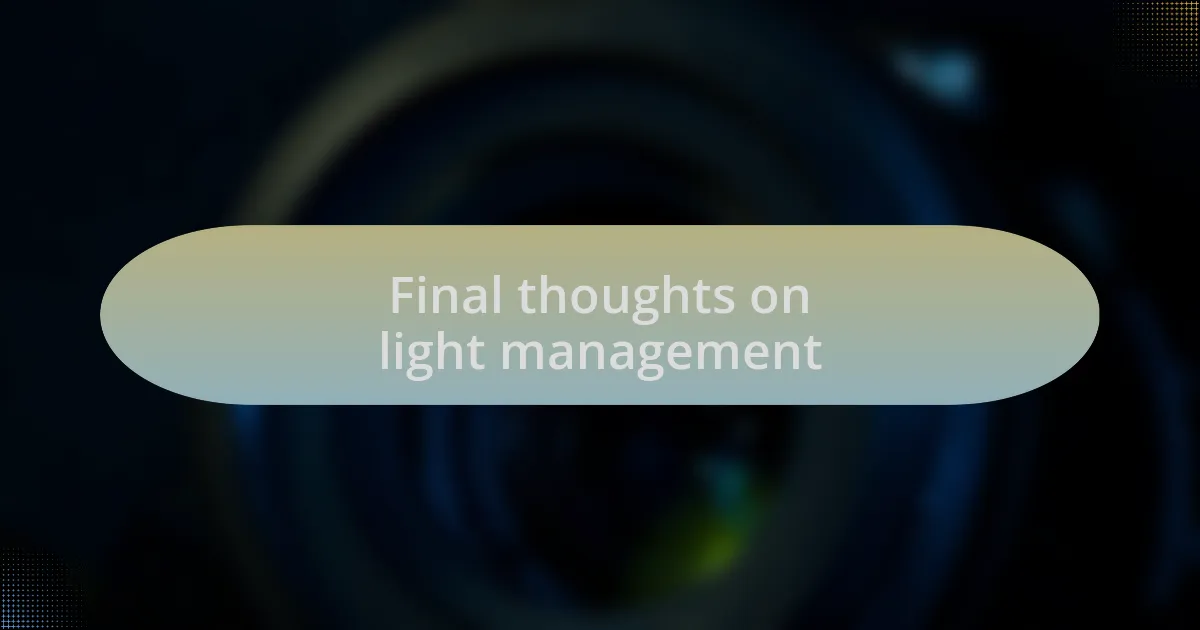
Final thoughts on light management
Managing light is an art that requires both patience and improvisation. I remember a late afternoon shoot in a bustling city park, where harsh sunlight created glaring shadows. Instead of shying away from this challenge, I sought refuge under the shade of tall trees. The filtered light not only softened the harshness but also added a natural gradient to my images. Have you ever found a little sanctuary in unexpected places to enhance your photos?
Reflecting on low-light situations, I once attended a concert where the lighting was dim and erratic. With fast-moving subjects and colorful stage lights, I had to act quickly. I increased my ISO to make my camera more sensitive to light, resulting in some grainy textures that added a unique atmosphere to the images. It reminded me that while perfect lighting is desirable, sometimes, the imperfect conditions yield memories that are just as vivid. Do you think that a little grain can actually enhance a shot’s character?
Ultimately, my journey with light management has taught me flexibility is key. I’ve come to appreciate how each lighting situation offers its own unique narrative — like a blank canvas awaiting the artist’s touch. When I shoot, I ask myself: What story am I trying to convey with this light? Each moment, whether challenging or ideal, contributes to that narrative in beautiful ways. Isn’t it fascinating how light can transform a simple image into a compelling story?